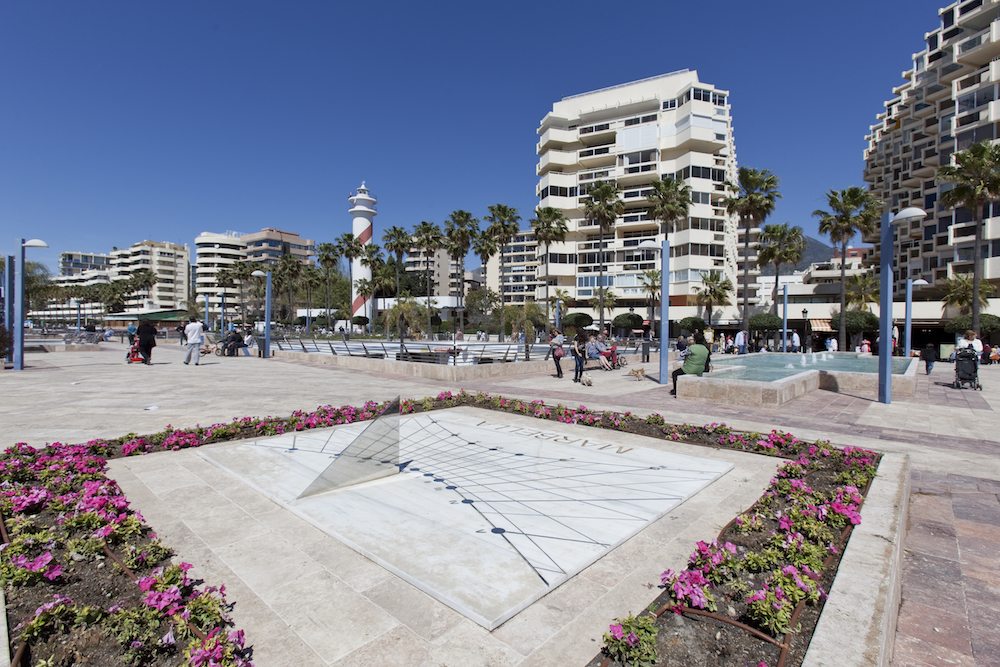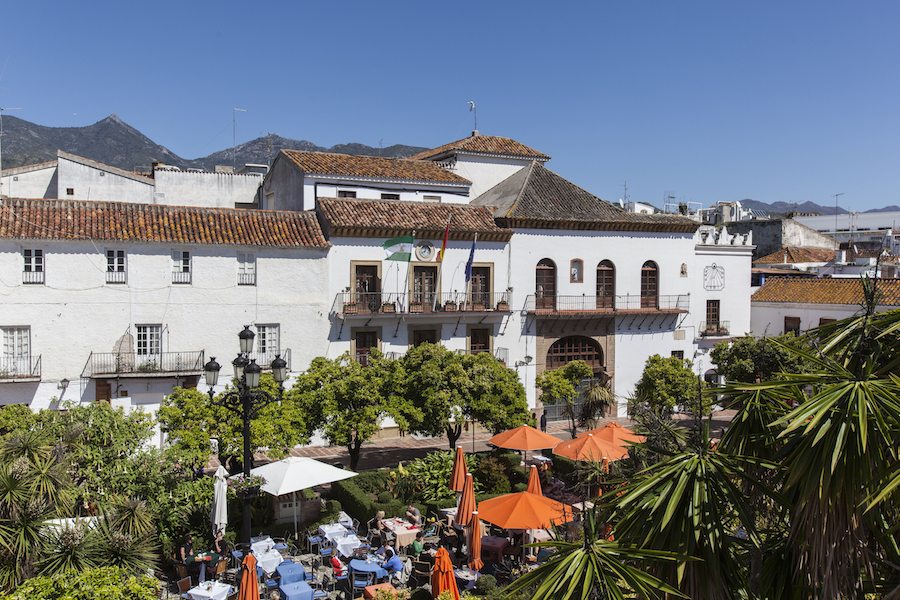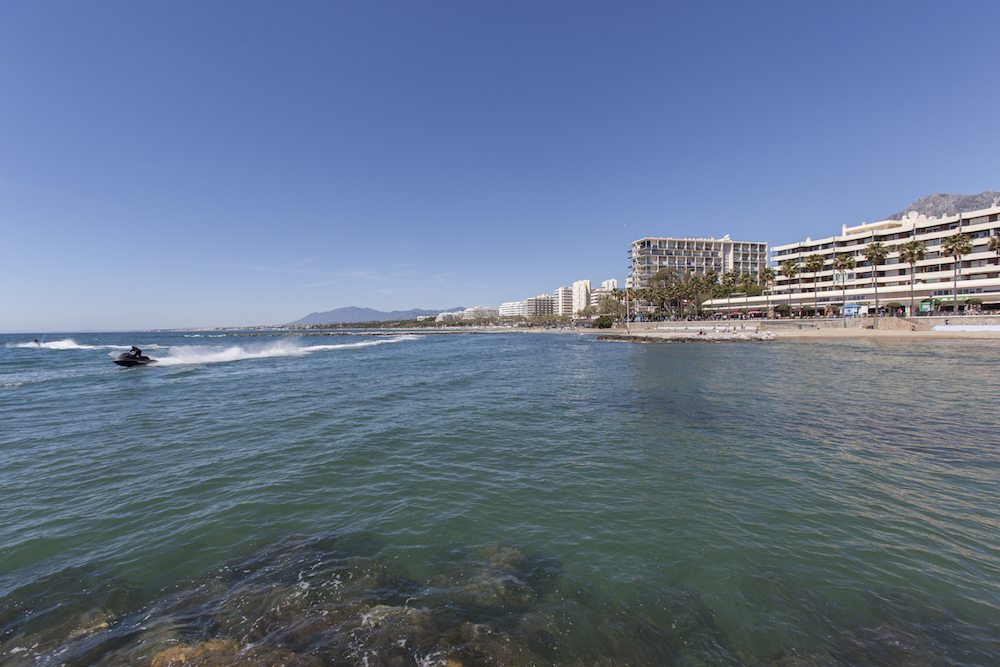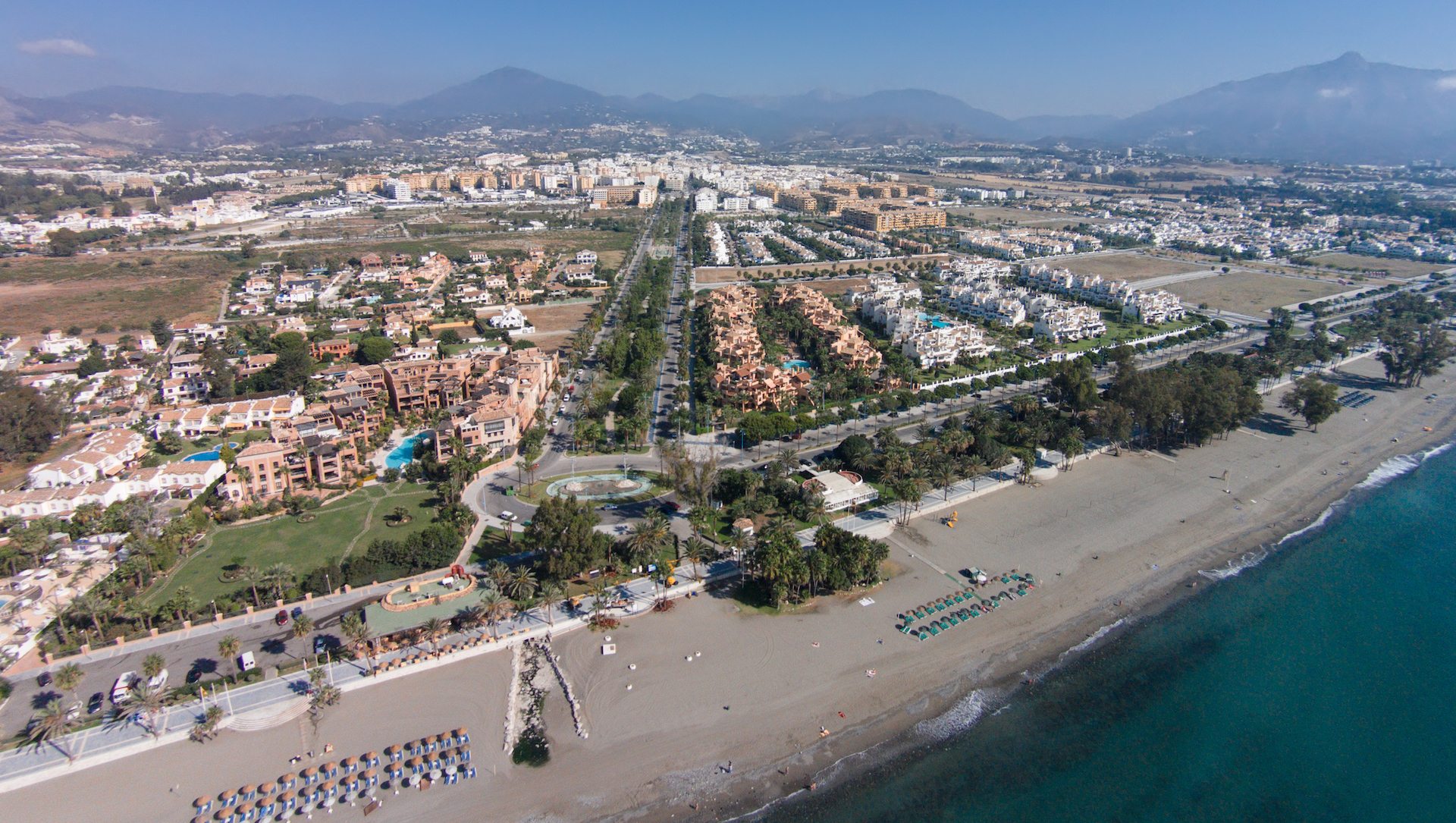Marbella
Marbella is a city of two faces
The Old town is still partly embraced by relics of the wall built by the Arabs to protect their city in ancient times. Barely a corner can be turned without happening upon a 16th Century church, lovingly preserved and standing shoulder to shoulder with the surrounding designer stores, independent shops and cafes that jostle for space in the quaint narrow streets making up the centre of Marbella Old Town.
In the heart of it all is the ‘Plaza de Los Naranjos’ or Orange Square. Not surprisingly, there are orange trees surrounding a Renaissance fountain in the centre of this very busy meeting place. There’s also stands a bust of King Juan Carlos 1, overseeing the comings and goings in this small part of the country he has recently relinquished his sovereignty of.
There are several restaurants in and surrounding the square all offering refreshment to those visiting Marbella to study its rich cultural heritage. Equal warm hospitality is given to those who have come to sit in this fragrant place with the sun on their face and a ‘tinto de verano’ (red wine of summer) in hand.
It’s easy to appreciate how tourism and tradition have managed to successfully co-exist in Marbella. Sit beneath a bright red umbrella in Orange Square and let your attention to your tapas wander to the buildings surrounding you. Amongst them are the 16th century Town Hall (and also the tourist office), the Mayor’s House and the Chapel of Santiago, the oldest religious building in the city. One cannot help but marvel at what the walls of these buildings have witnessed over the centuries and yet continue to gaze down beatifically and benevolently over the constant stream of visitors to their corner of Marbella.




The honeyed promenade is flanked by pavement cafes and restaurants serving traditional Spanish and international cuisine and runs the length of ‘La Fontanelli’, the 800m beach of dark sand. Here, as on other beaches such as ‘Playa Faro’, ‘Venus’ and ‘El Pinillo’, sun beds can be hired, water sports can be played and ‘chiringuitos’- rustic places to eat and drink on the beach- stand back from the shoreline.
Of course, if its charming Old Town, fascinating history and relaxing sands show the more gentle side of Marbella, then its reputation for glamour and wealth is the side of Marbella that lets its hair down.
Ever since the Marquis of Ivanrey moved to Marbella during the years after the WW11, this part of the coast has been synonymous with prestige and affluence. The Marquis invited his Hollywood friends and members of his aristocratic family to experience all Marbella had to offer and began to build its reputation as a desirable destination for the rich and famous. He acquired 2 estates in the area and built the Marbella Club Hotel in 1954 which remains a 5 star hotel, reigning over Marbella’s beach front to this day. With the building of Marquis first hotel so Marbella’s Golden Mile was born.
Today, the Golden Mile is actually 4 miles long, beginning at the western edge of Marbella City and stretching to Puerto Banus. As one might expect in the 60 years since its popularity began to rise, the beach side of the Golden Mile is well developed. Here can be found some of Marbella’s most luxurious hotels and urbanisations. Beach clubs compete for cool supremacy, where the confident young lounge around the pool with every intention of being seen and little intention of ever getting wet. And across the motorway dissecting the Golden Mile, urbanisations are still developing, nestling on the mountainside with spectacular views of mountains and sea.

















